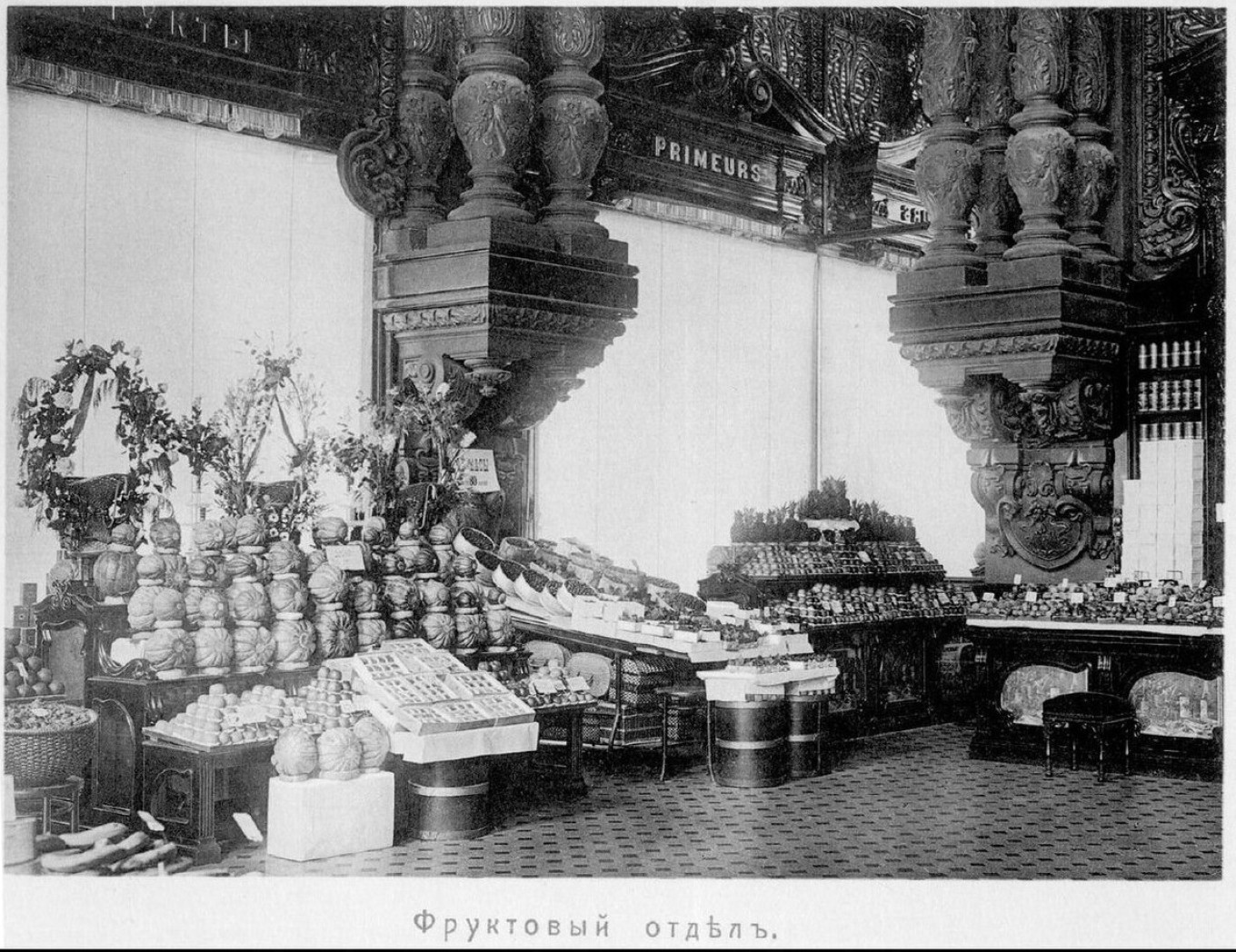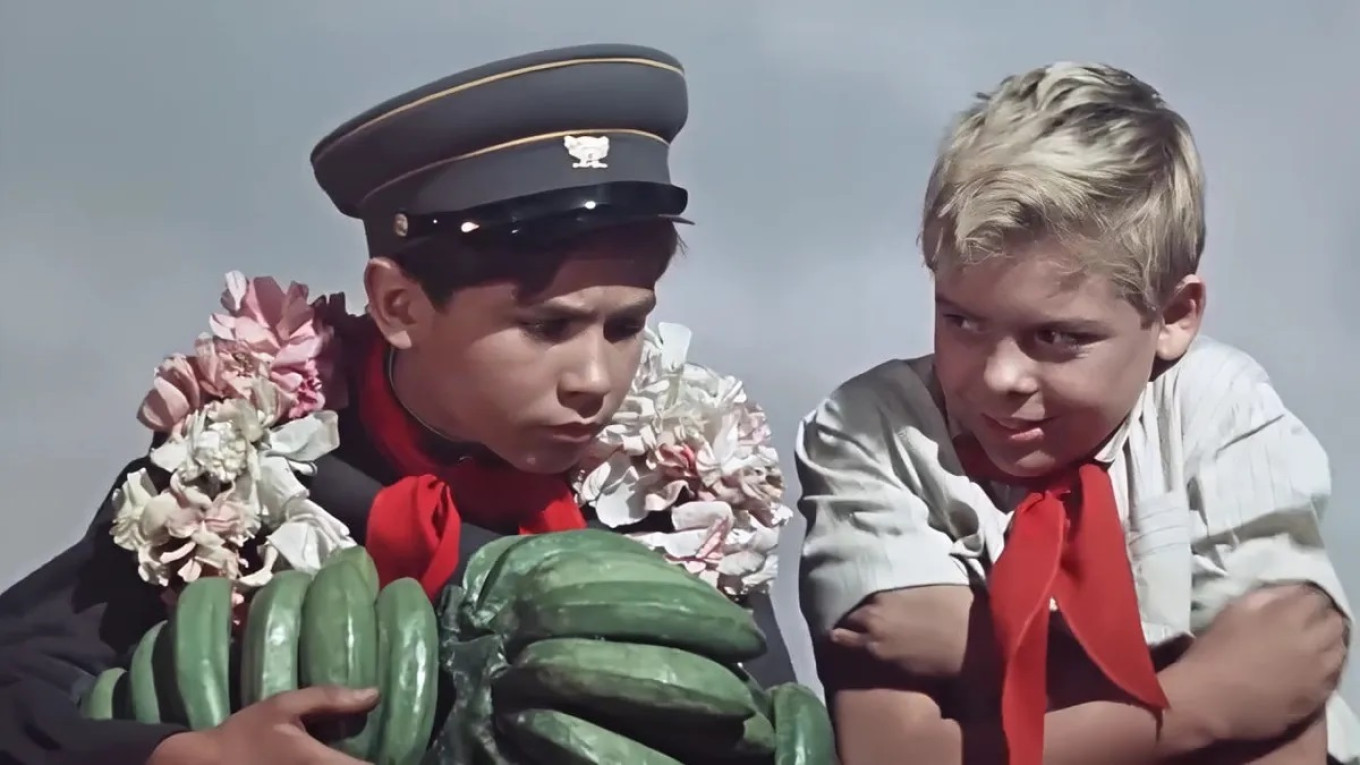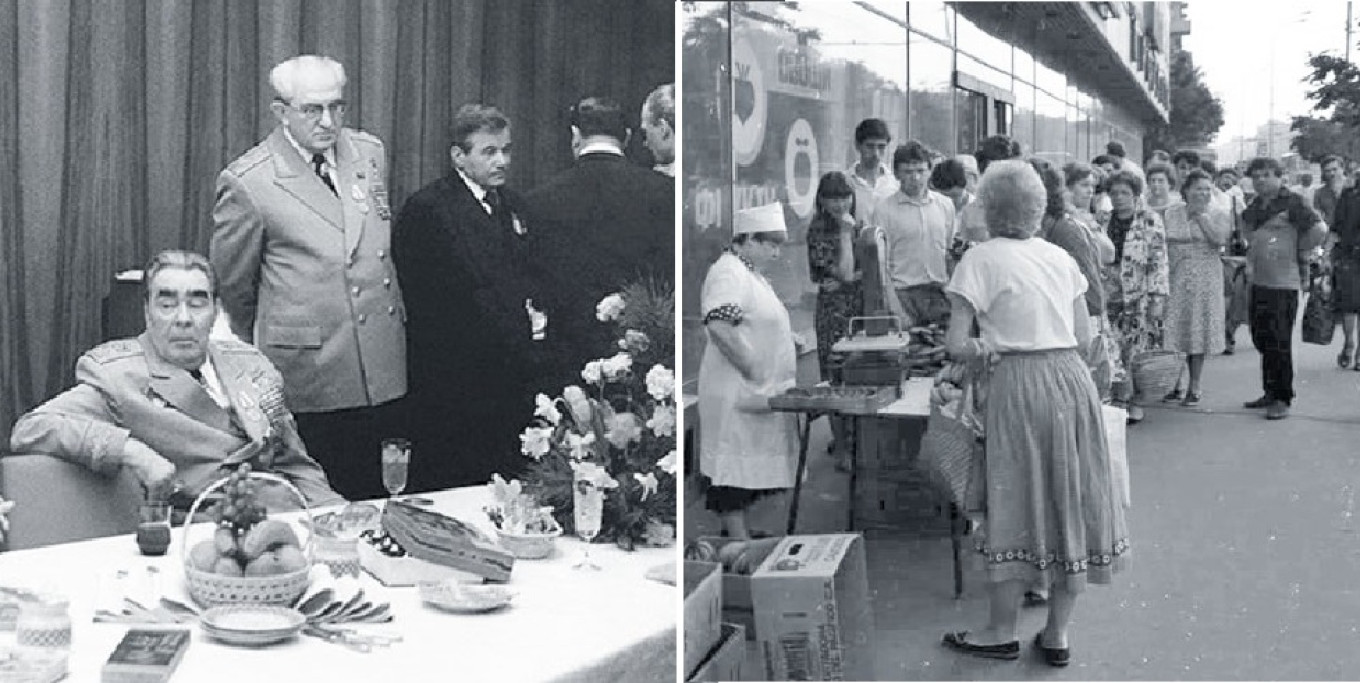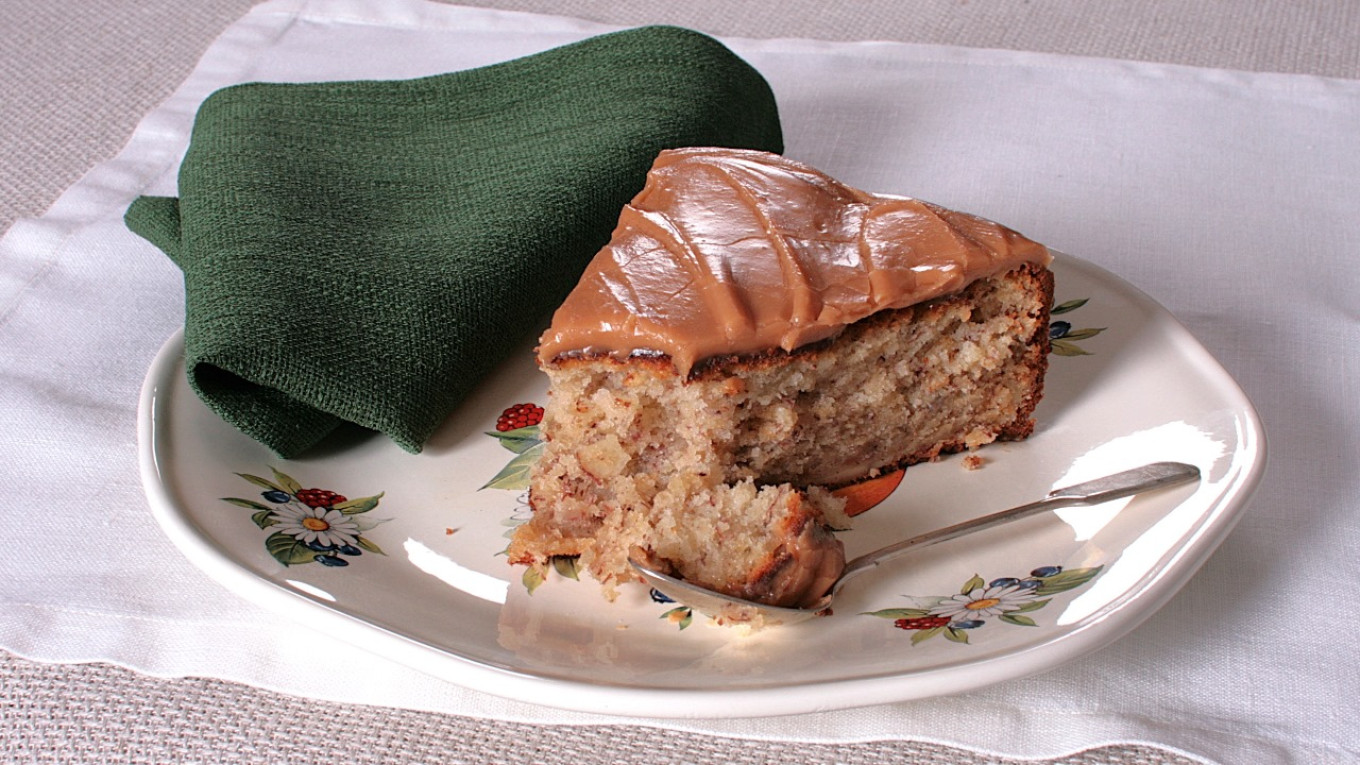The marvelous banana has been known in Russia for about 150 years. But over that time bananas somehow managed to appear several times, and each time it was like the very first time.
Back in the 1860s, non one in Russia knew what a banana was — not even the sophisticated St. Petersburg public. The magazine Around the World wrote: “The banana is something between a fruit and a potato. It is a substitute for bread — it's like a pudding that grows on a tree.” As the journalist described the wonders of tropical countries, it's clear that bananas are a totally unknown curiosity, like the crocodile or the coconut palm.
But in only three decades bananas will be part of Russians’ everyday life. Naturally, not all Russians — just the ones who could frequent expensive food shops in St. Petersburg or Moscow. “As far as bananas go, I believe the reader is familiar with them. If not, he can buy a few at Yeliseyevsky’s store for 15-20 kopecks a piece,” wrote a correspondent of the magazine Russky Vestnik in 1896. The merchant Yeliseyev had opened two shops, one on the main streets of both capitals, and they quickly became symbols of luxury and wealth.

This tropical idyll in the north did not last long. The outbreak of World War I interrupted trade relations with many countries. And the revolution, devastation and famine that followed in 1917 erased the memory of bananas among newly minted Soviet citizens for many years.
The Soviet regime did not spoil the population with many imported products. The little hard currency the country possessed was needed, first and foremost, to buy foreign equipment and production facilities: machine tools, factories and power plants. Even common spices such as pepper, cinnamon, cloves, and vanilla almost disappeared from the shelves in the 1920s.
Only in the mid-1930s was the wise People's Commissar Anastas Mikoyan able to convince Stalin that a new Soviet cuisine could become an important social project. It was impossible to carry out substantial wage hikes or make apartments and cars available and affordable. But stores and cafeterias could create a sense of celebration, make people feel that life was slowly changing for the better, with new products and meals. For all we know, maybe Stalin’s line in his famous speech in 1935 — “Life is getting better, living is more enjoyable” — was invented with some help from Mikoyan. It almost eclipsed the dark folk humor continuation of the phrase: “Necks are getting thinner but stretched longer.”
One of the symbols of this happy new life was bananas. The USSR first bought them in 1938. Of course, they were only available than the main supermarkets in the big cities. But on New Year 1939 Muscovites and even residents of several large cities had the pleasure and good forune to buy them. However, this arrival of bananas in Russia was brief and almost immediately forgotten by the population, and the onset of WWII quickly erased memories of Mikoyan’s culinary experiments.
The next “new” arrival of bananas took place only in the 1950s. This time it wasn’t because the authorities wanted to diversify the population’s diet but for more utilitarian reasons. The new friendship with China meant the construction of many factories in that country, but for the most part Mao Tse-tung's government could only pay for it with China’s traditional exports, including bananas.
The subsequent spat with China after Stalin's death did not affect banana imports, since Vietnam, which had “embarked on the path of socialism,” took over. In 1956, the first 200 tons of Vietnamese bananas arrived in the USSR. They were supplied as payment for the weapons used against French troops in the battle of Diên Biên Phu two years earlier. By 1965, Vietnam was sending 10,000 tons of bananas a year.

The US war in Vietnam stopped these exports. But by this time, Soviet people couldn’t live without bananas. Once they’d tried them, they fell in love with them. The government was forced to buy bananas for dollars in Ecuador. Even today the majority of bananas imported to Russia come from this country.
All the same, the Soviet masses did not get used to bananas all that easily. An unlikely source of information about how bananas entered Soviet lives was the children's fairy-tale movie “Old Man Khottabych” made in Moscow in 1956. In the story, children asked the wizard for some bananas as a treat. But even Mosfilm, the main movie studio of the country, could not find a bunch of bananas for filming. So they made a bunch out of papier-mâché — and painted them bright green. Clearly no one in all of Mosfilm had seen anything but green bananas.
And so the green, unripe bananas that arrived in Soviet stores became part of film history.

A story from the 1960s is still popular on social networks:
“Dima, what are you eating?”
“Aunt Sveta, it's a banana. We stood in line together to buy them.”
“But they were green and hard as wood!’
“They were unripe. They're like tomatoes — they ripen on the cupboard.”
“Damn!” Aunt Sveta said. “We stood in line for eight hours. At one o'clock in the morning we came home and tasted them — they were like wood and stuck to the roof of your mouth. We decided that they were raw and needed to be boiled. But that was like a pot of be glue. We poured it down the toilet ...but it turns out they are completely different! Dima, can I have a taste?”
I handed her a banana. She leaned over, carefully put the tip of the peeled banana in her mouth, took a bite... and the turned to me with a completely different expression and whispered, “We’re idiots! But how were we supposed to know?”

Did you think that was the last “first arrival” of bananas in Russia? Not at all. The Adventures of Bananas in Russia continue to this day. Due to the growing international isolation and economic crisis, the Russian authorities have decided... to grow bananas in the country. This was announced by Agriculture Minister Oksana Lut at the end of last year. As a result, bananas will probably return to their green state that is so familiar to Russians. And newspapers and television will assure everyone that unripe, green bananas are much more beneficial than ripe ones.
In fact, in order to make our favorite banana cake (based on Pierre Hermé's recipe), we had to put our green bananas on the cupboard until they turned ripe yellow.
Banana Cake With Caramel Sauce
Ingredients for the cake
- 250 g (1 c and 2 Tbsp) butter at room temperature
- 350 g (1 ½ c) fine sugar
- 1 vanilla pod, opened lengthwise and scraped
- 4 eggs
- 200 g (1 c) sour cream
- 300 g (2 1/3 c) flour
- 3 very ripe bananas
- 20 g (1 ½ Tbsp) brown sugar
Ingredients for the caramel sauce
- 200 ml (5/6 c) cream 35% fat content, heated
- 100 ml (scant ½ c) water
- 300 g (1 ½ c) fine sugar
- 80 g (1/3 c) unsalted butter

Instructions
- Preheat the oven to 190°C / 375°F.
- Grease a 28 cm (11 inch) round cake pan and line with baking paper.
- Put the butter and sugar in the bowl of a mixer. Add the vanilla seed paste. Beat on low speed until white.
- Add the eggs one at a time, beating well after each addition.
- Add the sour cream in two batches, then the flour in two batches. Beat thoroughly.
- Mash the bananas with a fork and sprinkle with brown sugar.
- Carefully add the bananas to the batter, mix well and pour into the prepared cake pan.
- Bake 55 minutes to 1 hour 15 minutes or until a skewer stuck in the center comes out clean. Cover the cake on top with baking paper if it browns too quickly.
- Meanwhile, prepare the caramel sauce.
- Pour the water into a large saucepan, add the sugar and place on high heat. Stir until the sugar dissolves. Once the sugar has dissolved, stop stirring but keep on the heat for 7-10 minutes or until the liquid is caramel colored. Remove from heat (the syrup will continue to darken, so it's important not to let it darken too much before you take it off the stove).
- Pour the cream into a saucepan and place over high heat. Bring almost to a boil.
- Carefully pour the heated cream into the pot with the caramel. The mixture will simmer around the sides and rise up four-fold. Place the mixture back on the heat and whisk until a smooth and homogeneous sauce is formed. Remove from the heat, let cool slightly, and then add the butter while whisking constantly.
- Take the finished cake out of the oven and let cool for 10 minutes, then flip it out the pan onto a large platter. When the cake has cooled to lukewarm, use a skewer to poke many holes. Drizzle with caramel sauce. Cut generous pieces of this fragrant and delicious cake.
A Message from The Moscow Times:
Dear readers,
We are facing unprecedented challenges. Russia's Prosecutor General's Office has designated The Moscow Times as an "undesirable" organization, criminalizing our work and putting our staff at risk of prosecution. This follows our earlier unjust labeling as a "foreign agent."
These actions are direct attempts to silence independent journalism in Russia. The authorities claim our work "discredits the decisions of the Russian leadership." We see things differently: we strive to provide accurate, unbiased reporting on Russia.
We, the journalists of The Moscow Times, refuse to be silenced. But to continue our work, we need your help.
Your support, no matter how small, makes a world of difference. If you can, please support us monthly starting from just $2. It's quick to set up, and every contribution makes a significant impact.
By supporting The Moscow Times, you're defending open, independent journalism in the face of repression. Thank you for standing with us.
Remind me later.







